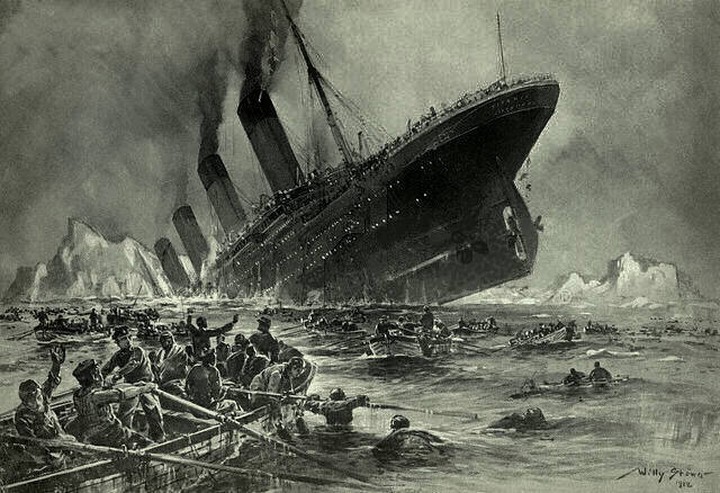Cold Waters
The springlike weather outdoors starts to be at its best and the last remains of the ice vanished weeks ago. When watching the blue open lake in a warm sunny day, not many boaters can resist the thought of launching for the first trip. However, there is a glacial fact slowing down your enthusiasm, namely water temperature.
The normal temperature of human body is about 37°C and it varies depending on the time of day 0.5°C to both directions. [1] When your body temperature falls under 35°C, it’s called as hypothermia. Its symptoms are hunger, malaise, obmutescene, fatigue, bad-temperedness, slurry speech and incoherence. [2] The following table shows referential information about the impact of cold. It should be remembered, that before exhaustion and unconsciousness, hypothermia lowers your performance, and also there are individual differences.
| Water Temperature | Exhaustion and Unconsciousness | Death |
|---|---|---|
| 0 °C | < 15 min | 15 – 45 min |
| 0 – 5 °C | 15 – 30 min | 30 – 90 min |
| 5 – 10 °C | 30 – 60 min | 1 – 3 h |
| 10 – 15 °C | 1 – 2 h | 1 – 6 h |
| 15 – 21 °C | 2 – 7 h | 2 – 40 h |
| 21 – 27 °C | 3 – 12 h | > 3 h |
Source: Finnish Swimming Teaching and Lifesaving Federation [2]
In 1912, when RMS Titanic sank, 1489 people were immersed into the icy water of the Northern Atlantic Ocean. Although they were wearing lifejackets and the water was calm, none of them survived longer than two hours. Hypothermia was widely recognized as the significant cause for their deaths. However, research has shown that majority of the peope died within minutes, that would have been too short time, to be caused by hypothermia. Instead, the response on cold shock is a valid reason for their rapid death. [3]
When a human gets immersed into cold water without warning, several autonomous responses arise. The victim starts hyperventilate uncontrollably, that makes them easily take in water and drown. [2] In addition to hyperventilation, cold shock also increases heart rate and blood pressure, to respond to the suddent cooling of the skin. In case of some individuals, this can increase the danger of heart failure or stroke. The third area, a cold shock impacts, is victim’s mind, where cold can trigger panic, fear, inability to think clearly, helplessness and other moods disabling normal operation. [4]
Kun itse puntaroin näitä asioita, niin veden lämpenemisen odottelu ei tunnukaan niin pahalta asialta. Purjejollassa istutaan lähellä vettä ja pidetään vene pystyssä miehistön painon avulla. Ilman kuiva- tai märkäpukuja tässä tasapainoilussa virheen tekeminen voi voimakkaassa tuulenpuuskassa ja kylmän veden aikaan tarkoittaa joutumista kasvokkain yllä kuvattujen riskien kanssa. Toki suuremmissakin veneissä tapahtuu aika ajoin miehistön jäsenen putoamisia veteen (man over board, MOB). Merellä kovan sään vallitessa tällaiset putoamiset ovat helposti kohtalokkaita. Loppujen lopuksi kaikissa urheilulajeissa on kysymys riskienhallinnasta ja vaaratilanteiden ehkäisemisestä. Veneily ei ole tässä suhteessa poikkeus.
Viime elokuulta muistuu mieleen retki Hietasaareen, jonka paluumatkalla veden lämpötila oli selkeästi ilmaa korkeammalla. Käden uittaminen lämpimässä vedessä veneen reunan yli hyvin miellyttävä kokemus. Lämpimämpiä vesiä odotellessa voi järvien ja merten pintavesien lämpötiloja seurata oheisista palveluista:
- Vesistöjen pintaveden lämpötila – Surface Water Temperatures in the Finnish lakes
- Vesistöennusteet: Järven pintalämpötilahavaintojen kooste – The Finnish Government forecasts about lakeland surface water temperatures
- Meriveden lämpötilaennuste – Surface sea water forecast for the Baltic Sea
- earth :: a global map of wind, weather, and ocean conditions – You can also view global ocean water temperatures
- World Sea Temperatures – Global statistics about ocean water temperatures
References
[1] Alilämpö, Terveyskirjasto
[2] Hypotermia, Finnish Swimming Teaching and Lifesaving Federation
[3] Findings: Titanic victims in ‘cold shock’, Times Higher Education
[4] Cold Shock, National Center for Cold Water Safety
All sources above are received in the day, when this article was posted.

